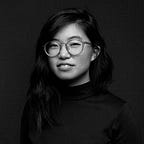Can witches defy ageism?
And why J.K. Rowling’s witches stand out in pop culture
When Meryl Streep played the witch in “Into the Woods,” she spoke candidly about how she’d been repeatedly offered the role of a crone after turning a certain age.
“In those days I had no reason to imagine that I would have a career past 40,” Streep said at the 2016 Berlin International Film Festival. “You could work up to 40 and then you’d start playing hags and witches. It’s one of the reasons I didn’t play a witch until ‘Into the Woods’ — and I had been offered many. It was that trough that women fell into.”
That “trough” is Hollywood’s bias against older women and its deference to youth. There’s been a binary thought that witches are either wizened spinsters who dabble in harmful magic, or they’re attractive young women who use their powers for societal good. (And they’re all usually white.)
Of course, there are exceptions. There are always exceptions.
But there’s no denying that popular culture’s perception of a woman in her later years isn’t pink and rosy, and the collation is clear when you look back at the history of women and persecution in the United States. Those who lived on the fringes of society — those women cast as “others” — were labeled, cornered and harassed. Ultimately, witch characters are the products of centuries of ageism and prejudice.
Witches in European and U.S. history
In Western culture, there’s a dark and disturbing history between the association of women — particularly older ones — and witchcraft.
Back in the late 17th century, a not-so-small event known as the Salem witch trials occurred in colonial Massachusetts. It was toward the tail end of Europe’s own witch-scare.
At the height of England’s hysteria, during the late 1500s and early 1600s, the majority of those executed were women. It was believed that they were the weaker sex, and thus more easily tempted by the Devil. It didn’t help that many of the accused were often single women and widows, or poor and marginalized already.
“In the real witch trials, it was about 75 percent charges of witchcraft made against women,” said feminist historian Jone Johnson Lewis in a recent Washington Post article.
This percentage is also reflected in the Salem witch trials. Of the 20 people accused of witchcraft executed in less than four months, 15 of them were women.
Women were targeted, persecuted and hanged for their supposed links to dark magic.
The first three people accused of witchcraft during that Salem hysteria? They were a slave, a beggar and an elderly woman who hadn’t attended church in years. Society considered them misfits.
And the first to die by hanging? An outcast. Bridget Bishop, a woman in her upper 50s or early 60s, was an easy target because she behaved outside community norms.
Witches in folklore
It’s no wonder, then, that those considered “elderly” are frequently typecast as witches in folklore. They’re depicted as women who prey on the young and helpless.
Here’s a sampling of tales from around the world:
Witches in popular culture
Witches exist in all sorts of tropes today — from your haggard, one-eyed grandmothers to innocent, young white women discovering their new powers.
We took the most well-known witches from Glamour’s list of “41 famous witches. Our favorite wicca from TV, movies and books,” added a few of our own, then charted them to get a sense of how witches are stereotyped.
Very few witches, we found, fall inside the category of both senior and good. Most are either mature and villainous, or youthful and mostly harmless.
Here’s an exception: If you’re wondering why no one from “Harry Potter” is plotted, it’s because J.K. Rowling’s fantasy series defied the gravitational pull of centuries-long biases. With nuanced portrayals of witches like Hermione Granger and Professor Minerva McGonagall, her reverence to witches is evidenced by the erudite climb it took to become one.
Her characters span all ages and body types. She had typical outcasts, like Luna Lovegood and Professor Sybill Trelawney, to scary and murderous witches, like Dolores Umbridge and Bellatrix Lestrange. Rowling fashioned every witch, every way.
The witch hunt continues
The witch cliche still lives on, though some argue that the idea of the witch has become more feminist over the years. But it’s tough to erode hundreds of years of norms with one swoop of a statement. Even complex portrayals of today’s Hollywood witches are relegated to young, white women like Willow in “Buffy the Vampire Slayer” and Melisandre in “Game of Thrones.”
Decide what you will about witches as feminist icons or not: Appearance continues to be an underlying factor in determining whether a witch is “good” or “bad” in books and movies. And it’s often influenced by age.
But as scary as it is that these bigotries exist in popular culture, it’s scarier that they exist in our present day, real life. In December 2011, a Saudi woman named Amina bint Abdul Halim bin Salem Nasser, believed to be in her 60s, was executed for “sorcery.”
Clearly, the fear of witches is still alive today.
Illustrations by Eileen Tjan for The Lily • Art direction by Amy Cavenaile
